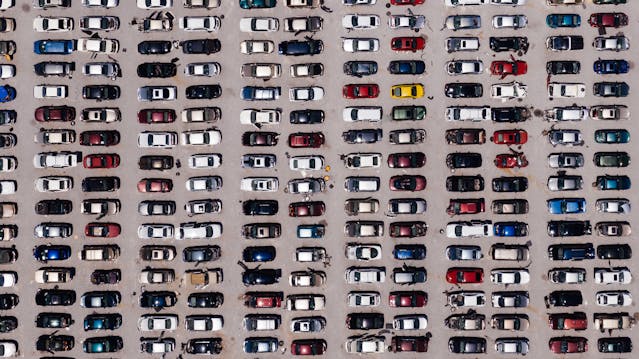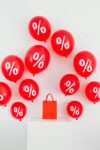
How Vast Does Your Collection Need to Be When Launching an NFT Collection?
So you’re thinking about launching an NFT collection.
You’ve seen others do it and have heard about the success you can achieve, but you’re lost on where to start and are probably thinking, “how many unique or rare pieces do I need to include in my collection?”. You’re not alone. Countless others ask the same question, so you’re at the right place, as this article aims to answer this for you.
Creating an NFT collection (a series of NFTs that convey a specific idea) can be [a little] overwhelming, especially as some drops can have thousands of NFTs in their collection while others have a few. But not to worry, here are three things to consider:
Firstly, before starting this project, take a realistic look at your capacity, skillset and resources:
- With everything you have going on, do you have enough time to dream up and draw cool art concepts (because we all need time to think)?
- Does your art style have personality and a strong visual identity (artistry and faultless technology are needed to create that unique mix of singularity and utility)?
What’s more, you’ll need quite a bit of cash to mint all that art (unless you go down the route of lazy minting – creating an NFT and putting it up for sale without it being written to the blockchain. More on that here).
Additionally, you’ll want to consider the following points before committing to launching an NFT collection:
- Do you already have an angle in mind?
- Is it creative enough to stand out?
- Do you plan to go for a polished look or for a look a little rough around the edges?
Once you answer these questions, you’ll begin moving in the right direction for your NFT project.
Secondly, you’ll want to determine how many NFTs to include in your collection.
If you’re just starting out and have limited everything (we’ve all been there), we recommend focusing on what you can realistically achieve, such as a 25-piece collection vs a 1,000 or 10,000-piece.
Are there others you can recruit to help?
There’s no prescribed way to do this, and artists come up with creative ideas every other day.
Some creators opt to release multiple, singular pieces which can massively range in design, style and time commitment. In contrast, others choose to use a programmatically generative process that automates the combination of many separate components or layers of art to create [hundreds or thousands of] new and unexpected NFTs. You’ll have to create the interchangeable assets and underlying base characters to begin with, then input, upload, and programme the sequence.
But once done, the programmatic sequence takes over and combines the assets to create thousands of unique character designs. Check out the build space which helps users generate their own NFT collection.
Creating and launching an NFT collection is an all-encompassing process that imprints the personality of the artist(s) onto the collection and involves a cohesive vision, planning, and a knowledge of how to implement rarity; think Bored Apes, Evil Bunnies and Goblintown, to name a few.
So it’s certainly not an undertaking to be entered into lightly.
Blockchain bias?
There’s also the question of which blockchain to use and which NFT marketplace to launch your collection; here’s an article by The Verge explaining the blockchain technology that NFTs use.
There are more than 20 marketplaces where NFT art, across a variety of blockchains, can be bought and sold, so it’s an untenable task to attempt to cover them all or even tell you which marketplace is suitable for your project.
A good rule of thumb is to create a shortlist and browse the sites you’re interested in, seeing which marketplaces’ do’s and don’ts you’re most comfortable with; for example, popular NFT marketplace, X2Y2, will allow buyers to forego royalties on certain NFT purchases. Want to receive royalties on any NFTs you sell? Now you know to look away from X2Y2.
How are you planning to sell and market your NFTs?
Thirdly, and some would say most crucially, you’ll want to consider marketing; extensive collections will take more work, time and money to promote and sell.
As you can imagine, it’s a much bigger job to move 10,000 NFTs than it is to move just one.
If your time and resources are limited, it may be best to start with a smaller, more manageable drop and then scale up from there.
When planning the launch of your collection, it’s also essential to think about the end user, the person who’ll ultimately be buying these – do they want super-exclusivity, or are they more interested in variety and the option to be a part of something bigger?
While NFTs have become a lucrative venture for some artists, collectors, and investors, the real value for most is in the associated flex because we humans are social creatures wired to be part of a community, group, movement or club.
So art brings people together over a common interest or hobby; in this case, it’s NFTs.
What price to set for your NFT collection? Many factors go into how a floor price is calculated – [anticipated] demand for the NFT, the NFT’s offering, e.g. real-world utility, and the creator’s reputation, and collaborations (which tend to double the value of an NFT).
The higher the floor price, the higher the perceived value and admission cost. For better or worse, the floor price represents the lowest value for an NFT in a market, as determined by the creator. Others agreeing with the value set by the creator is another matter entirely.
Creators set the floor price of an NFT collection on the primary market. Should the collection proceed to the secondary market, they try to list it at a higher floor price than they originally minted it for (to make a profit). However, some artists become impatient and end up listing their collection at a lower price than the initial mint price, to free up liquidity.
Appeal Factor
You could increase the appeal of your collection by offering perks such as tickets to events, priority booking, music, videos, or physical artwork. However, consider the exclusivity factor and deliverables in terms of how manageable delivering these perks will be, given your team’s size and commitments.
In summary, there isn’t a right or wrong number of NFTs to include in a collection, and there isn’t “one way” when launching an NFT collection – there’s only the way that’s right for you. As with some things in life, it comes down to you, the artist, to decide. Remember that as long as your collection has more than ONE NFT, it’s a collection.
It’s certainly an exciting time to be involved with everything Web3, and undoubtedly we’ll see more innovation as we go.
Have questions? Email us at [email protected], and follow us on Facebook, Instagram, and Twitter for more articles and NFT content.




